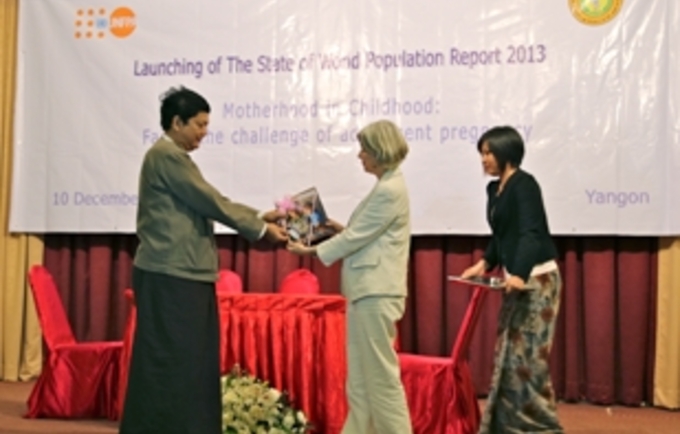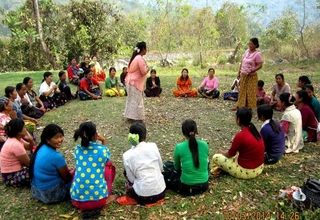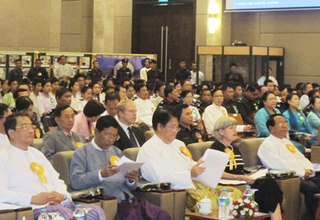Girls under the age of 15 account for 2 million of the annual total of 7.3 million new adolescent mothers. If current trends continue, the number of births to girls under the age of 15 could rise to 3 million a year in 2013. Very young girls are especially vulnerable to exploitation, child marriage and sexual coercion and violence. Girls who become pregnant very young are twice the risk of death and disability, than older girls and women. About 70,000 adolescents in developing countries die annually of causes related to pregnancies and childbirth.
Ms. Janet Jackson, UNFPA Myanmar Representative said at the Myanmar press launch that “Myanmar may not have many adolescent mothers, nor do the majority of the country’s girls marry young. However this does not mean that many young girls are not vulnerable to unintended pregnancies. We know they are. Part of protecting adolescents is through access to information and access to reproductive health services, including contraception. This will help reduce their vulnerabilities and strengthen their ability to take responsibility. Prevention is the best way to avoid unsafe abortions, and this is happening in many places, thanks to youth spaces and adolescent friendly spaces.”
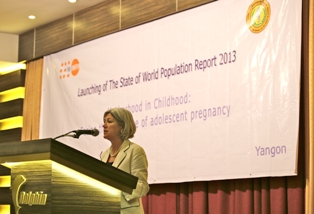
Unsafe abortions by an unqualified practitioner are predominately responsible for complications post-abortion and at worst results in deaths of young mothers. In Myanmar this is the case in over 10% of pregnancies within the age group of 15-19, largely because of barriers based on social and cultural values that prevent young people accessing reproductive health services, including those for birth spacing. Worldwide, in developing countries the number of adolescent pregnancies is 680,000. This is a worrying number, because it is estimated that there are 3.2 million abortions amongst 15-19 year-olds, meaning that for every teenage birth, there are five abortions, mostly unsafe.
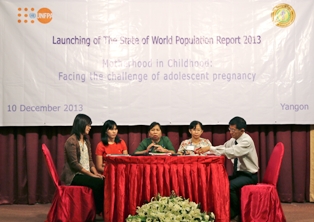
The State of World 2013 (SWOP 2013), which is UNFPA’s annual flagship publication calls for action that empowers girls, upholds their basic human rights and puts them on an equal footing with boys as well as for the girls to receive an education. The report, which this year focuses on “Motherhood in Childhood, facing the challenges of adolescent pregnancy,” highlight that girls who remain in school longer are less likely to become pregnant.
“Education prepares girls for future jobs and livelihoods, raises their self-esteem and status, and gives them more say in decisions affecting their lives. Education also reduces the likelihood of child marriage and delays childbearing,” said UNFPA Executive Director, Dr. Babatunde Osotimehin, in his official statement at the official launch of The State of World Population on 30 October.
At the Myanmar launch UNFPA used the opportunity to congratulate the Ministry of Health for launching the National Services Standards and Guidelines on Adolescent Health Care in July with support from WHO and UNFPA. UNFPA is also a member of the recently established National Task Force for youth policies. UNFPA remains committed to work with the Government and all stakeholders to help meet the needs and potential of the young people of Myanmar.
